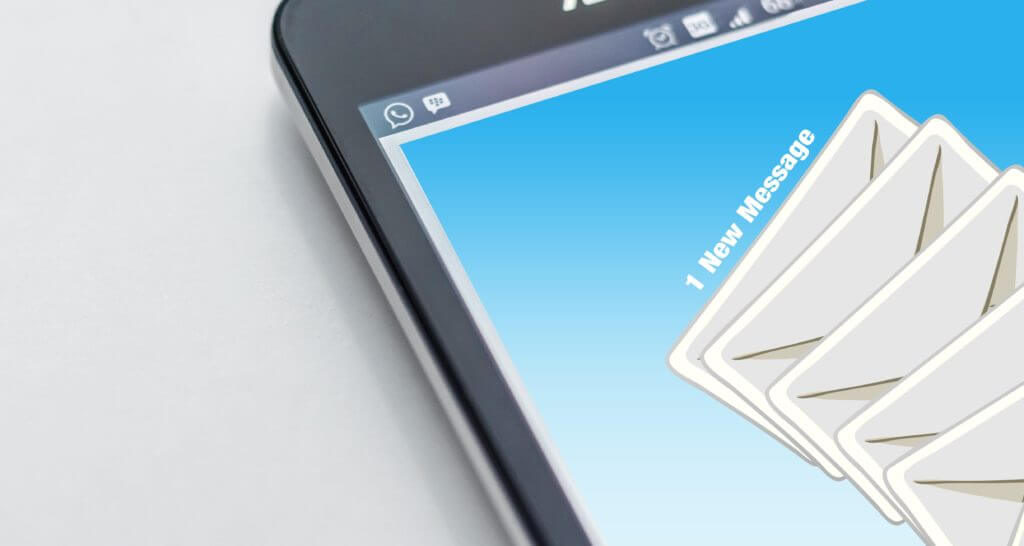
Email marketing has been around for a while, so it makes sense that the channel has some tried-and-true, data-backed strategies. Marketers adopting a new channel like business texting may even feel wary of leaving behind their learnings—but email marketing techniques don’t need to go to waste. In fact, many of them can be applied to SMS marketing, too.
Some email marketing strategies don’t apply to SMS marketing, of course. For example, texts don’t need catchy subject lines because they simply don’t have them—and SMS has a 98% open rate anyway, so the message will most likely be opened no matter what the first few words are. Since business texts can’t support HTML images like emails do, there is no need for marketers to worry about designing aesthetic texts. (NB: texting a link to a stunning HTML email can be a great way to sidestep plain messages).
But other than those differences, there are many email marketing strategies that are applicable to SMS, too. Read on to learn about the top 5 that you can start using today.
SMS Marketing Tip #1: Personalize Your Messages
The benefit of personalizing emails is well documented. For example, an Experion study found that personalized emails can deliver a transaction rate 6 times higher than unpersonalized emails. Marketers are used to using email marketing platforms, like Pardot, that automatically add each recipients’ name to a mass list of emails.
In many ways, personalization is more important with business SMS. Luckily, business texts can be personalized just as easily as business emails. Advanced business texting platforms empower teams to send personalized templated messages to lists of recipients by automatically filling in templates with custom fields for each individual recipient. Platforms should include a wide variety of customer field options, like appointment date, address, past purchases, etc.
SMS Marketing Tip #2: Segment Your List Subscribers
Segmenting, or splitting recipient lists based on certain qualifications, is big in email marketing. This technique allows marketing teams to send relevant content to people who are most likely interested. This way, the recipients who opt in to emails will feel like the content they receive is useful. It’s a very successful strategy; a Lyric Inc. study provided to eMarketer found that 39% of marketers who segmented their email lists experienced higher open rates, 28% experienced lower unsubscribe rates, and 24% experienced better deliverability and increased revenue.
In business texting, segmentation is also possible. Like email marketing, SMS marketing calls for an opt-in process that requires businesses to ensure they have the proper permissions, provide an easy opt-out process, and send only valuable content. Within business texting platforms, teams can create lists that separate recipients any way they please. For example, marketers could have a list called “Loyal Customers,” with customers who have made multiple purchases, and “Potential Customers,” with customers who have texted with product-related questions. If marketers want to start an SMS marketing campaign for a new product, they can send two slightly different texts to the two parties, each tailored to their specific situations. Some texting platforms even empower businesses to automatically segment contacts into lists by custom fields.
SMS Marketing Tip #3: Automate Your Campaigns
Drip campaigns, sometimes called “trigger campaigns,” are also popular in email marketing. These automated campaigns send batches of emails based on certain criteria, like whether the recipient clicked on the initial email. Forrester revealed that trigger-based email marketing campaigns can generate 4x the revenue and 18x greater profits than normal emails.
SMS marketing offers similar automations. In fact, some platforms offer drip campaign capabilities that rival email marketing drip campaigns—but are even easier to use. SMS drip campaigns can be initiated when contacts text into a number, opt in to texting services, or are automatically added to a list that is part of a drip campaign.
SMS Marketing Tip #4: Run A/B Tests
Marketers rely on frequent A/B testing to hone their email marketing strategies. The process involves creating two identical emails but adjusting one item in one of the emails for testing, like the subject line. Then, half of the recipients are sent version A, and the rest are sent version B. After reviewing analytics, marketers determine which email was the most successful, and use that technique in the future. According to Campaign Monitor, successful marketing programs are 70.2% more likely than less successful programs to A/B test their automated emails at least once a year, and are 94.7% more likely to A/B test their transactional emails at least once a year.
SMS marketing and SMS customer service strategies can benefit from A/B testing, too. For example, teams can test whether a personalized signature at the end of each text inspires recipients to text back. After sending list A of recipients a text with no signature, and sending list B a text with a short signature, marketers can easily compare response rates to determine which text inspired more replies.
SMS Marketing Tip #5: Track Overall Results
In the marketing world, there is nothing more important than tracking and analyzing campaigns, then improving strategies based on the results of those insights. Each email marketing platform worth its salt offers marketers analytics capabilities.
Business texting is no different. Reporting and analysis is vital for teams that want to continue to improve their SMS marketing or SMS customer service strategies year-over-year. While measuring success with business SMS is slightly different from measuring success with email, the basic principals are the same: KPIs and data provide critical insight into how your business can improve its texting services. For example, while open rate is a popular KPI in email marketing, it can’t be tracked in SMS platforms due to protocol and the high, implicit open rate. Instead, SMS reply rate is very important. Another critical metric is how often contacts return, or message your business days, weeks, or months later. Finally, because compliance is so important in the world of SMS marketing, it’s important to have reports that show how many and which contacts opted out of messages.
Interested in testing an advanced business platform? Try our text service for business for free today.




